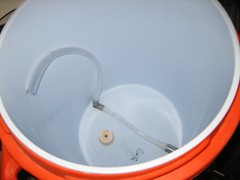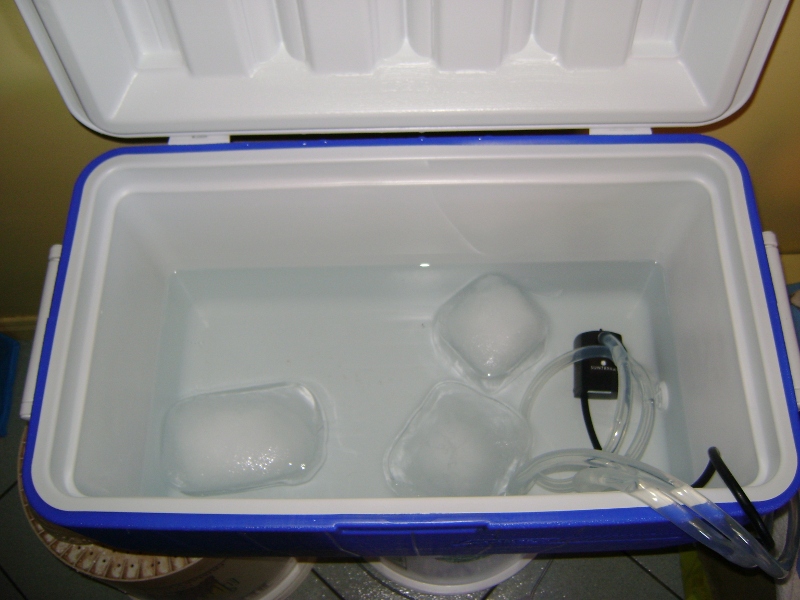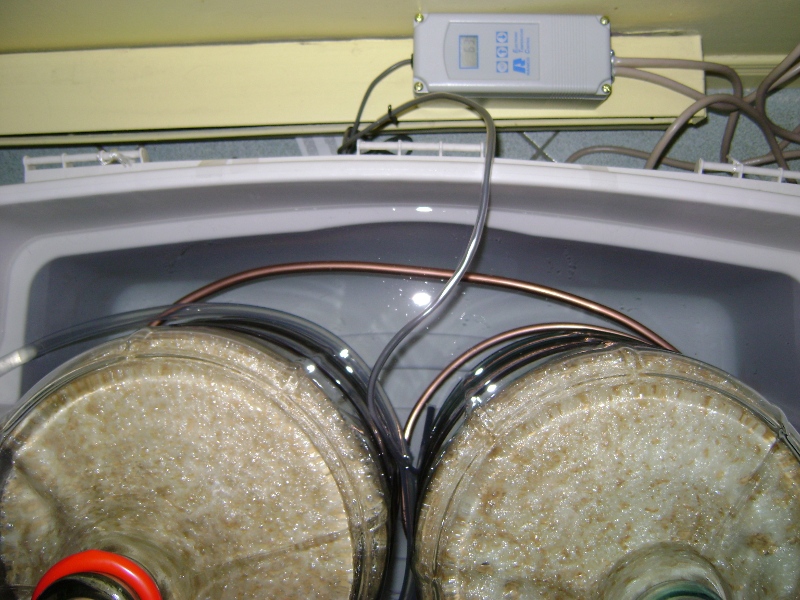That should work fine, I would think. Pumping the water directly (as in the OP) has the advantage of not needing to transfer the heat, it just moves the water. But an IC should have plenty of heat transfer capability.
Understood. I guess I am trading off efficiency for ease of use/implementation. If the pump runs 2-3 times longer in my situation vs. directly pumping the ice water, I am okay with that.
Two suggestions - 1) put the probe in the water such that the pump shuts off quickly. The coldest water will be the water sitting in the IC (it has had time to give up its heat). Might as well just pump that cold water, then let it sit and come to an average temperature.
Im thinking of either putting the probe directly in between the carboys or at the furthest point from the cold water out, basically the opposite corner. Which would be better?
and 2) get the bottom insulated. Cold sinks and you want to hold the cold in.
Great point, I think I am going to use the second rubbermaid I have and insulate between the two with expanding foam
I don't think stratification will be a big issue, the ice will float to the top, so you will get a natural flow from the cold on top dropping to the bottom and rising again as it warms.
The only reason I thought of stratification was from experience with cooling wort. If you dont stir the wort a cool layer sits right outside the copper, essentially limiting the temperature delta. I guess when the delta is only a few degrees you don't have quite the same issue
-kenc


















![Craft A Brew - Safale BE-256 Yeast - Fermentis - Belgian Ale Dry Yeast - For Belgian & Strong Ales - Ingredients for Home Brewing - Beer Making Supplies - [3 Pack]](https://m.media-amazon.com/images/I/51bcKEwQmWL._SL500_.jpg)















































